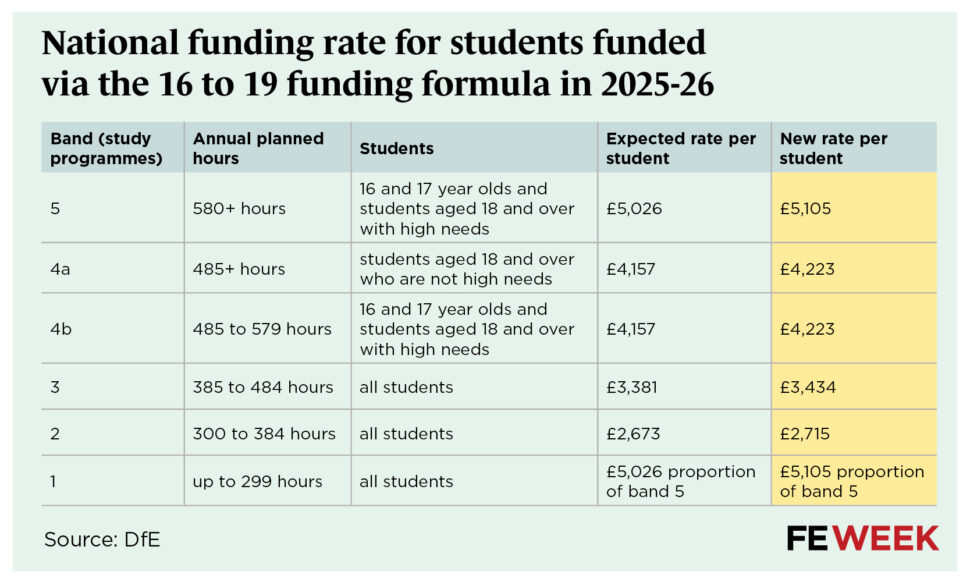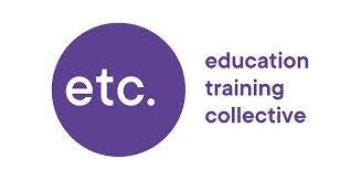The national funding rate for 16 to 19 year old students will be bumped up to £5,105 in the next academic year following the government’s latest cash injection.
Education secretary Bridget Phillipson announced last month that an extra £190 million will be funnelled into 16 to 19 education from September 2025, £160 million of which will go to colleges and other providers who train that age group.
The sector was expecting the funding rate for young students on study programmes of 580 or more hours to rise 3.78 per cent, from £4,843 to £5,026.
This rate will now increase to £5,105, which is 5.4 per cent higher than 2024-25.
Other elements of 16 to 19 funding, including T Levels, disadvantaged and English and maths funding are also rising.
James Kewin, deputy chief executive of the Sixth Form Colleges Association, said this was a “good settlement given the fiscal climate” and when “compared to other parts of the education sector and wider public services”.

T Level funding rates, which were expected to fall following the DfE’s decision to reduce a 10 per cent uplift to 5 per cent, will shoot back up.
Colleges were expecting the funding rate for band 9 “very large” T Levels of 1,830 total planned hours for the programme’s two years to drop from £15,330 in 2024-25 to £15,188 in 2025-26.
But this will now increase to £15,430 from September.
Band 8 T Levels will rise from £13,926 to £14,146, band 7 will increase from £12,664 to £12,864 and band 6 will be boosted from £10,980 to £11,154.
Additional payments for disadvantaged students and care leavers will also rise: £570 for bands 4 and 5 students will lift to £609, the expected £347 for bands 2 and 3 will move to £371 and £772 for T Level students will increase to £825.
English and maths funding for resit students will also be boosted.
Per student per subject funding for band 4 and above will go up from £375 to £418, while bands 3 and 2 will move from £229 to £255 and band 1 will shift from £375 to £418.
And lastly, programme cost weightings for higher cost courses have been increased to “boost capacity in priority sector subjects such as construction, manufacturing and digital which are vital to economic growth”.
The table below shows what the seven programme cost weightings have moved from and to.
| From | To |
|---|---|
| Base (1) | Base (1) |
| Low (1.13) | Low (1.15) |
| Medium (1.26) | Medium (1.29) |
| High (1.39) | High (1.44) |
| Very High (1.52) | Very High (1.58) |
| Exceptionally high (1.65) | Exceptionally high (1.73) |
| Specialist (1.975) | Specialist (2.09) |
The £190 million funding pot was announced on the same day Phillipson accepted the School Teachers’ Review Body’s (STRB) recommendation for a 4 per cent pay rise in 2025-26.
The education secretary said the 16 to 19 cash boost for FE providers “will enable these institutions to address the immediate challenges they face in recruiting and retaining the expert teachers”.
Although it has no formal role in setting teacher pay in colleges, this was the first year the STRB was asked to provide the government with evidence about pay in colleges.
Colleges and unions have campaigned heavily for extra funding to close the pay gap that favours school teachers over college teachers.
The STRB’s report cited Institute for Fiscal Studies estimates that the pay gap now stands at almost £7,000, or 18 per cent.
Further education college unions and the Association of Colleges will begin negotiations for a pay recommendation for 2025-26 next month. Meanwhile, sixth form college leaders hope the funding announcement can stave off further strike action.















Your thoughts